Pros
Cons
Introduction
Product Overview
{{section_header}}{{section.name}}{{/section_header}}
Get to know the Able Planet Clear Harmony NC1050 headphones.
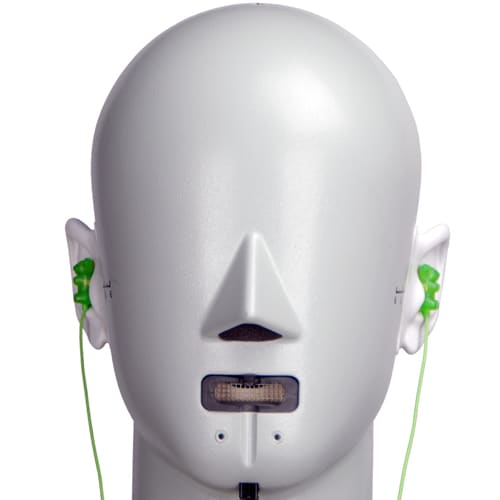
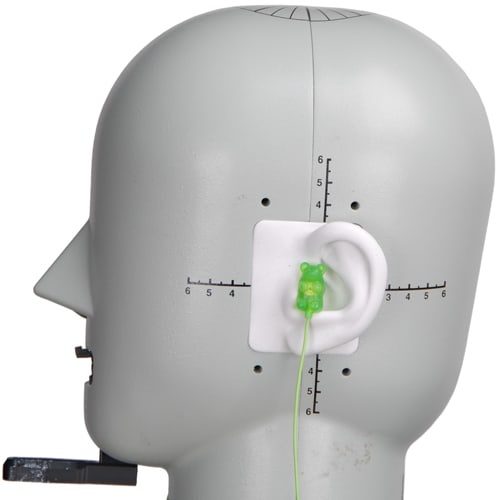
Speakers
{{section_header}}{{section.name}}{{/section_header}}
Here we see the speaker element, guarded by a thin mesh to keep sweat and gunk out of the driver.
Back
{{section_header}}{{section.name}}{{/section_header}}
The {{product.name}}s have a rather standard shape, but the carbon-fiber weave design on the back of the ear cups scream modernity.
Band
{{section_header}}{{section.name}}{{/section_header}}
Covered in a soft foam, the band of the {{product.name}}s cover their metal elements well, adjusting to fit your head.
Cable
{{section_header}}{{section.name}}{{/section_header}}
Like many high-end models, the cable of the {{product.name}} is removable to allow easy and cheap replacement in the event of breakage, which is a huge plus for durability. The stock cable is punctuated by a volume dial.
The stock cable of the {{product.name}}s terminates in a standard 1/8th inch plug, which should be more than adequate for your mobile devices.
As previously mentioned, the cable guards do not matter as much, because they can be replaced! Here we see the female 1/8th inch jack.
In the Box
{{section_header}}{{section.name}}{{/section_header}}
Upon opening the packaging for the {{product.name}}s, you will discover a carrying case, your headphones, a pair of AAA batteries (not pictured), an extension cable, and an airplane adapter.
Durability
{{section_header}}{{section.name}}{{/section_header}}
While the hardware of the {{product.name}}s themselves isn't built to withstand a nuclear blast or anything, if you take proper care of them you shouldn't run into any issues. On top of that, you can replace the most likely component to break, so your cans stand a good chance of lasting a long time.
Aesthetics
{{section_header}}{{section.name}}{{/section_header}}
We're fans of the understated-but-unique designs, and the carbon-fiber weave design is a cool look that won't put you in the spotlight. We aren't fans of the form of the headphones, but function is the primary goal of cans, right?
Frequency Response
{{section_header}}{{section.name}}{{/section_header}}
When we first ran into this result in our labs, we tested, retested, then tested some more. What you're seeing is the best result we gathered with the noise canceling unit turned on, as it is the most representative result of likely use we were able to find. While the packaging heralds an award-winning type of audio technology, we'd like to point out that people listing to vocal or guitar-heavy music will notice a substantial drop in volume of the mid range and high mid range (or the last third of a standard 88 key piano).

As you can see above, the response is mostly flat aside from that strange muffling of the mids. That being said, the highs are a bit overemphasized, and the dip in the midrange isn't quite as egregious as it is without the noise canceling enabled. While this isn't necessarily a great frequency response, it's far better than it is with the noise cancellation unit off, pictured below.
Simply put, these headphones do not offer the best frequency response for music listening without the noise cancellation enabled, as many of the high notes are muffled to an inappropriate degree. Both mids and high notes are quieted in comparison to the low end if the noise canceling is turned off, and it does so to a degree that goes well outside of our ideal limits.

Click here for more information on our frequency response test.
Distortion
{{section_header}}{{section.name}}{{/section_header}}
With the active noise canceling turned off, there's a low level of general distortion, and a spike at about the 2kHz mark which might be barely audible if you know what you're looking for. The level of distortion actually improves with the noise canceling turned on, pictured below.

Noise Cancellation On
For reference, here is how the graph looks without noise cancellation enabled:
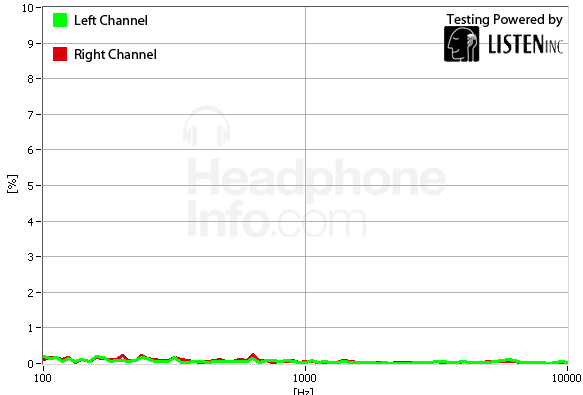
Click here for more information on our frequency response test.
Tracking
{{section_header}}{{section.name}}{{/section_header}}
The {{product.name}}s shift wildly in channel preference all over the full range of frequencies, and it's to the point where the headphones' shortcomings are fairly audible. While turning on the noise cancellation helps a tiny bit, it doesn't solve all its problems:
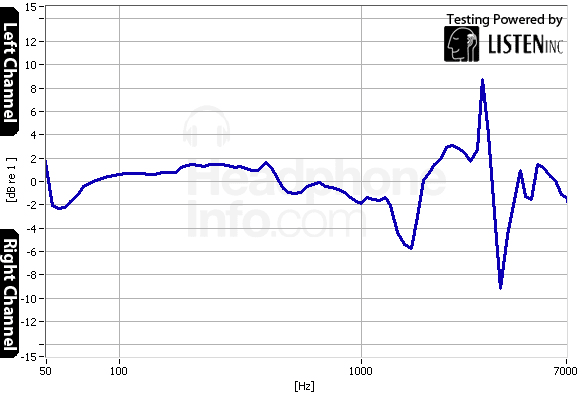
For reference, here is how the graph looks without noise cancellation enabled:
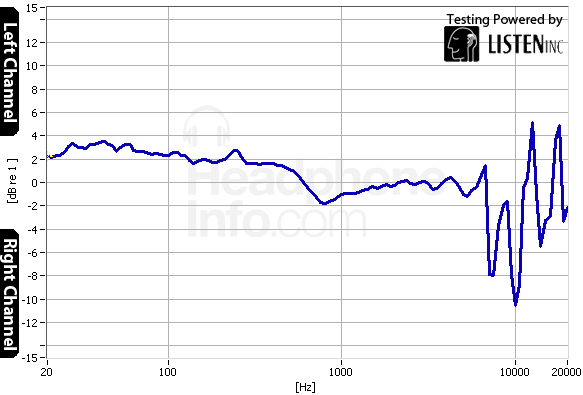
Click here for more information on our frequency response test.
Isolation
{{section_header}}{{section.name}}{{/section_header}}
Even without turning on the active noise cancellation, the {{product.name}}s block out a fairly high amount of noise for headphones of their type. Turning on the unit will afford you about 10dB more attenuation throughout the low end, which is an entire order of magnitude. Not bad, Able Planet!

Click here for more information on our isolation test.
Leakage
{{section_header}}{{section.name}}{{/section_header}}
Despite the decent attenuation, the {{product.name}}s do leak a bit of sound, but not enough to disturb everyone around you; just a little bit.
Click here for more information on our leakage test.
Maximum Usable Volume
{{section_header}}{{section.name}}{{/section_header}}
Despite the {{product.name}}s' ability to crank your music up to 109.64dB before it hits a level of 3% total harmonic distortion, we advise you not to listen to music at this volume, as you run a high risk of giving yourself noise-induced hearing loss, and that's a very sad thing for an audiophile to endure. Protect your ears!
Click here for more on our maximum usable volume test
Short-Term Use
{{section_header}}{{section.name}}{{/section_header}}
While these cans gently caress your skull if you have a smaller head, they are rather problematic for listeners with larger noggins, as the band does not extend very far to accommodate heads of larger than average size. This was a common complaint in the office, and we'd advise you to pay special attention to this if you're aware of having copious amounts of cranium, as these cans will probably not fit you.

Extended Use
{{section_header}}{{section.name}}{{/section_header}}
Over time, the fit doesn't change, so the {{product.name}}s get the same marks here.
Customizability
{{section_header}}{{section.name}}{{/section_header}}
Aside from being able to swap out your cable should it break (or you want a better one), included in the packaging is a 1/4th inch adapter if you would like to use these headphones with your home setup, and an airplane adapter if you want to use them on a flight. Other than that, there's really not much else you can do to customize your cans.
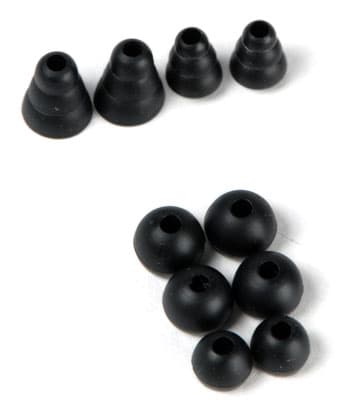
Cable Connectivity
{{section_header}}{{section.name}}{{/section_header}}
The {{product.model}}s' cable is the standard 3.93 foot long affair that is punctuated by a volume dial, with a 1/8th inch termination. If you elect to use them, the {{product.model}}s come packaged with an 1/4th inch adapter, and an airplane adapter, allowing a wide range of options for device connectivity.
Portability
{{section_header}}{{section.name}}{{/section_header}}
Despite the {{product.model}}s being over-ear cans, they're somewhat portable, as they come with a carrying case that effectively contains the headphones, their adapters, and cable. Still, these cans are somewhat bulky compared to on-ears, so your mileage may vary.
Maintenance
{{section_header}}{{section.name}}{{/section_header}}
Aside from wiping down the thin mesh material on the inside of the ear cups, there isn't much you can do to maintain your cans. However, the cable assembly is superb because you can swap out 1/8th inch male-to-male cables at will, making the cost of maintenance low, and the chances your headphones will last high.
Other Features
{{section_header}}{{section.name}}{{/section_header}}
Battery
The {{product.name}}s use dual AAA batteries placed in the back of the left ear cup. While relying on batteries to function is not ideal because it increases the cost of use over time, active noise cancelers need additional power to fuel their noise canceling drivers. Able Planet doesn't have a stated battery life on their website, so we can't give you a good idea about how long you can expect your cans to work on a single set of batteries.
Volume Control
Partway down the stock cable of the {{product.name}}s is a volume dial that allows you to control the output of your music without having to adjust it on your media player itself. There's nothing spectacular about this unit, but it's nice for those who have media players tucked away in a pocket somewhere.
Active Noise Cancellation
By flipping the switch on the back of the left ear cup, you enable the {{product.name}}'s active noise cancellation system, and block out about 10dB of ambient noise in the low end (the ear cups physically block out a good deal more high end noise). While this system isn't the best we've seen so far, it's far from the worst, and should afford you some reprieve from the assault of ambient noise from the world outside.
Design
{{section_header}}{{section.name}}{{/section_header}}
Both units are over-ear, active noise-canceling headphones with removable/replaceable cables. While the {{product.name}}s don't accommodate users with larger heads, the Bose cans are somewhat more forgiving in this regard.
Frequency Response
{{section_header}}{{section.name}}{{/section_header}}
Neither set of headphones as a stellar frequency response, but the Bose cans win out by maintaining a somewhat palatable response.
Distortion
{{section_header}}{{section.name}}{{/section_header}}
The Bose QuietComfort 15s have a higher level of distortion than the {{product.name}}s do.
Tracking
{{section_header}}{{section.name}}{{/section_header}}
Neither set of headphones has a tracking response among which we'd label "good," but the Bose headphones have fewer egregious errors than the {{product.model}}s.
Isolation
{{section_header}}{{section.name}}{{/section_header}}
While the {{product.name}}s do offer a decent level of noise attenuation, the QuietComfort 15s block out a bunch more sound than the Able Planet cans do.
Comfort
{{section_header}}{{section.name}}{{/section_header}}
While both sets of headphones offer a similar level of comfort, the Bose headphones are more forgiving of larger heads, and therefore will fit a wider range of people. Still, if you get the chance, try each on! Comfort is largely subjective, and what might be unmitigated torture for one person could be a fairly good experience for another.
Verdict
{{section_header}}{{section.name}}{{/section_header}}
Considering that the two sets of headphones are at about the same price point and offer varying levels of performance, there's very little reason to buy the {{product.name}}s over the Bose headphones as they fill the same role.
Design
{{section_header}}{{section.name}}{{/section_header}}
Both sets of headphones are remarkably similar, as both have removable cables, active noise cancellation units, and virtually identical packaging contents. The {{product.name}}s seem to be a newer iteration of the Able Planet hallmark headphones.
Frequency Response
{{section_header}}{{section.name}}{{/section_header}}
While the bass is heavily over-emphasized in the NC300s, the overall frequency response seems to be much better in the older headphones.
Distortion
{{section_header}}{{section.name}}{{/section_header}}
Both headphones have minor distortion problems, but not quite at the level where they'll be prominently audible.
Tracking
{{section_header}}{{section.name}}{{/section_header}}
Despite the fact that neither set of headphones has a good tracking response, that of the {{product.name}}s is technically better, as there are some frequencies that are somewhat near neutral in channel preference.
Isolation
{{section_header}}{{section.name}}{{/section_header}}
Neither set of headphones light the world on fire with their noise attenuation, but they definitely attenuate more sound than most headphones without active noise cancellation.
Comfort
{{section_header}}{{section.name}}{{/section_header}}
The {{product.name}}s have somewhat softer padding than do the NC300s, but the catch is that the band does not extend to a length that accommodates those with larger heads. If you somehow narrow your purchasing choice down to these two sets of headphones, be sure to try each on before making a decision of your own.
Verdict
{{section_header}}{{section.name}}{{/section_header}}
We would advise you to keep searching if you are seriously considering buying either set of headphones, unless someone is literally giving them away. Because neither lacks a "deal breaker" performance point, and the relatively high cost of each set of headphones, if you narrow down your choices to these two headphones, you're basically trying to pick the least bad between a wildly erratic tracking response, or a very poor frequency response.
Design
{{section_header}}{{section.name}}{{/section_header}}
Despite both sets of headphones being over-ear active noise cancelers, they are different in a couple key aspects. For starters, the Sennheisers are much more gentle on your cranium and accommodate people with larger heads, and the {{product.name}}s have a shorter band and less powerful active noise cancellation unit.
Frequency Response
{{section_header}}{{section.name}}{{/section_header}}
While neither frequency response is spectacular, the PXC 450s maintain a response that stays within our limits much more effectively.
Distortion
{{section_header}}{{section.name}}{{/section_header}}
The Sennheisers have less distortion than do the {{product.model}}s
Tracking
{{section_header}}{{section.name}}{{/section_header}}
Neither set of headphones has a good tracking response, but that of the PXC 450s is technically better, as it has fewer extreme blemishes.
Isolation
{{section_header}}{{section.name}}{{/section_header}}
The PXC 450s have a better all-around active noise cancellation unit.
Comfort
{{section_header}}{{section.name}}{{/section_header}}
While comfort comparisons are largely subjective, what we can tell you for sure is that the PXC 450s are far more forgiving to those with larger heads, and generally have less clamping force than the {{product.model}}s. However, that opens up another problem in that those with smaller heads may find that the PXC 450s move around too much. We strongly recommend trying each on before making a decision.
Verdict
{{section_header}}{{section.name}}{{/section_header}}
Considering the age and performance difference of the PXC 450s, if you have an average-to-large sized head, there's virtually no reason to buy the {{product.name}}s over the PXC 450s outside of price difference if that exists. Sometimes you can find the {{product.model}}s for cheaper, but both have the same MSRP.
Design
{{section_header}}{{section.name}}{{/section_header}}
Aside from the obvious design differences between in-ear and over-ear headphones, the Remix Remotes are less durable than the Able Planet cans in that their cord cannot be replaced. Still, with the extra options like a remote and mic, additional sleeves, and increased portability, spending just south of $80 for the V-moda cans isn't too unreasonable.
Frequency Response
{{section_header}}{{section.name}}{{/section_header}}
While neither frequency response is perfect, the errors of the Remix Remotes are far less obnoxious. The V-modas do over-emphasize bass a bit, though.
Distortion
{{section_header}}{{section.name}}{{/section_header}}
Neither set of headphones has an egregious problem with distortion, but the V-modas have less total harmonic distortion.
Tracking
{{section_header}}{{section.name}}{{/section_header}}
The Remix Remotes have a decent response here, which is enough to beat out a bad one.
Isolation
{{section_header}}{{section.name}}{{/section_header}}
Despite lacking an active noise canceling unit, the V-modas offer a comparable level of noise attenuation without a battery by physically blocking the sound from entering in your ear canal.
Comfort
{{section_header}}{{section.name}}{{/section_header}}
While most in-ears are typically less comfortable than over-ear headphones, we urge you to try each on beforehand in order to determine what your comfort level would be, as what is awful for one person can be heaven for another.
Verdict
{{section_header}}{{section.name}}{{/section_header}}
Sometimes, analog solutions just work better. In terms of headphones, if you're okay with using in-ears, you can buy much more effective headphones for far cheaper than you'd pay for the {{product.name}} at full sticker price. It's really up to you. For some people, in-ear headphones are plain dreadful to wear, and that's understandable. Still, if you're looking for the best audio experience you can afford, there are many better and cheaper options out there than the {{product.name}}s if you're willing to make some tradeoffs.
Conclusion
{{section_header}}{{section.name}}{{/section_header}}
Despite the marketing surrounding the {{product.name}}s having "award winning audio," we're not exactly sure for what. With a mediocre-at-best frequency response, disappointing isolation for an active noise cancellation unit, terrible tracking, and high cost, the {{product.name}}s lag far behind even some more budget active noise canceling options.
To their credit, these headphones are not even close to the worst we've ever reviewed, as they do offer a relatively low level of distortion, and a merely bad frequency response when the noise canceling is enabled. What makes this especially hard to swallow for prospective buyers is the fact that the sticker price is too high, but that there are loads of headphones that perform better in every category for less money.
But who knows? Maybe you find the {{product.name}}s on sale somewhere, and you're going on a flight soon, and active noise canceling headphones are a necessity. If you've read the review and are fine with its shortcomings, they are certainly better in some aspects than iPod earbuds.
Meet the tester
A seasoned writer and professional photographer, Chris reviews cameras, headphones, smartphones, laptops, and lenses. Educated in Political Science and Linguistics, Chris can often be found building a robot army, snowboarding, or getting ink.
Checking our work.
Our team is here to help you buy the best stuff and love what you own. Our writers, editors, and experts obsess over the products we cover to make sure you're confident and satisfied. Have a different opinion about something we recommend? Email us and we'll compare notes.
Shoot us an email

